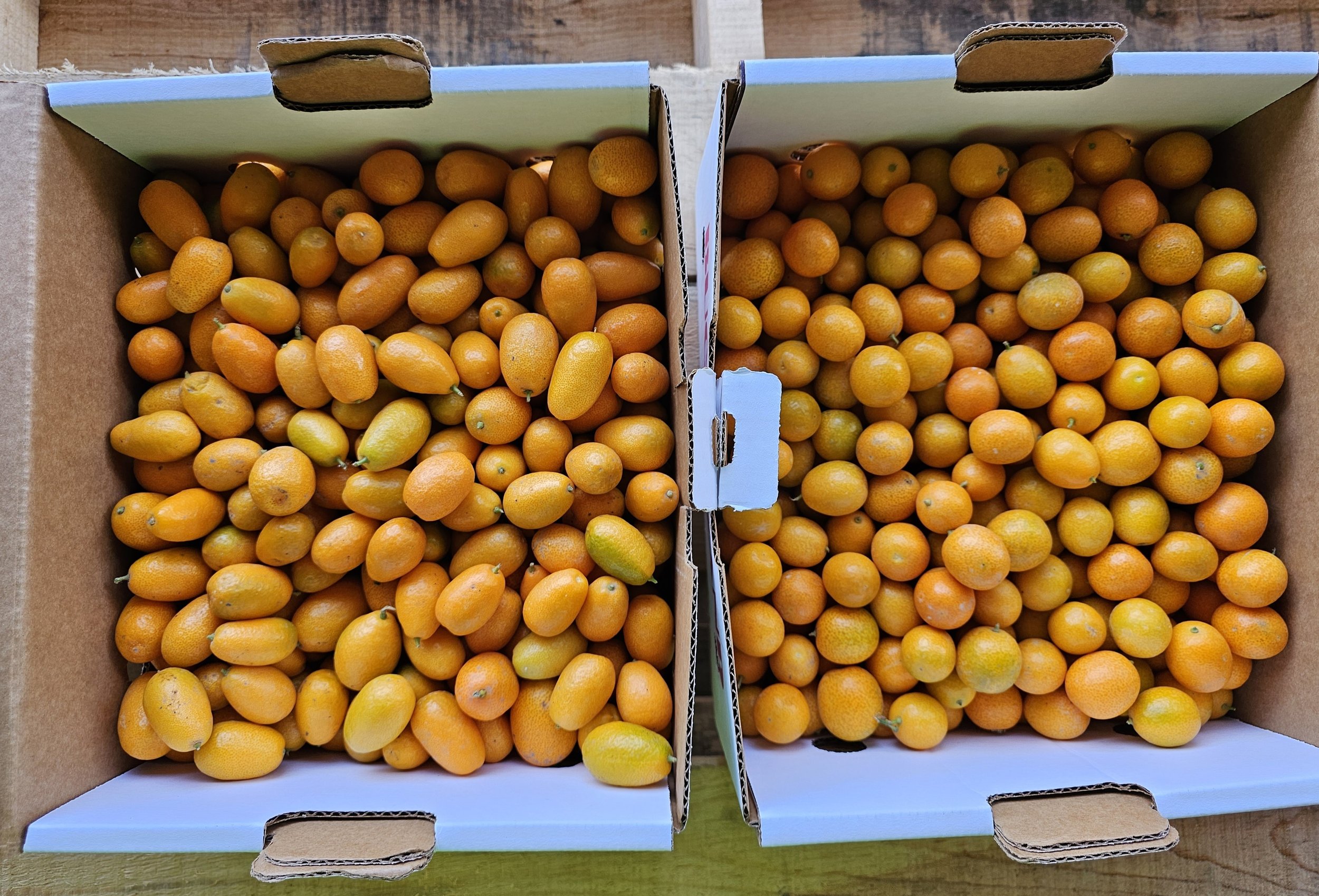KUMQUATS-A POWERFUL SENSORY EXPERIENCE
Kumquats are a unique member of the citrus family and are thought to come from China. The two main varieties of kumquats are the sweet and tart oval shaped Nagami and the sweet round Meiwa. There are many other varieties of kumquats and hybrid kumquats including the Mandarinquat.
Kumquats are very hardy and can withstand cold temperatures below 20 degrees Fahrenheit. For that very reason hybrid kumquats were developed by a researcher in Florida who wanted to grow citrus farther north where citrus such as lemons, limes and oranges can not grow. These hybrids can be substituted for lemons or limes and make great marmalades.
The versatile bite sized kumquats are small and fun to eat. They don’t need to be peeled which makes them perfect for snacking. They are on average about an inch long and are completely edible including the seeds.
Nagamis and Meiwa Kumquats
Nagamis
You are in for a powerful sensory experience as the ZING of the sourness hits your taste buds and your mouth puckers up. The rind is sweet and the flesh is tart. We recommend slicing it up and adding it to your favorite salad. It goes particularly well with a quinoa salad.
Meiwa
Sweet rind and flesh with a good spicy flavor. It is the best kumquat for eating out of hand.
Mandarinquat
Mandarinquat
A cross between a Kumquat and a Mandarin. They are small enough to fit in the palm of your hand. Eat them whole, seeds and all. Fragrant orange flesh has a sweet tart flavor. Bite into the sweet rind for a tangy, sweet and super juicy sensory experience!
How to eat a kumquat:
Let the fruit come to room temperature and then gently rub the kumquat between the palms of your hand to get the juices and oil going, releasing the amazing citrus fragrance. Pop them in your mouth and enjoy!
Kumquats can be hard to find at times but worth searching out. California leads the nation in production. Northern San Diego County is where many farms focus on specialty crops such as kumquats but they can be found growing as far north as Placerville, north of Sacramento.


